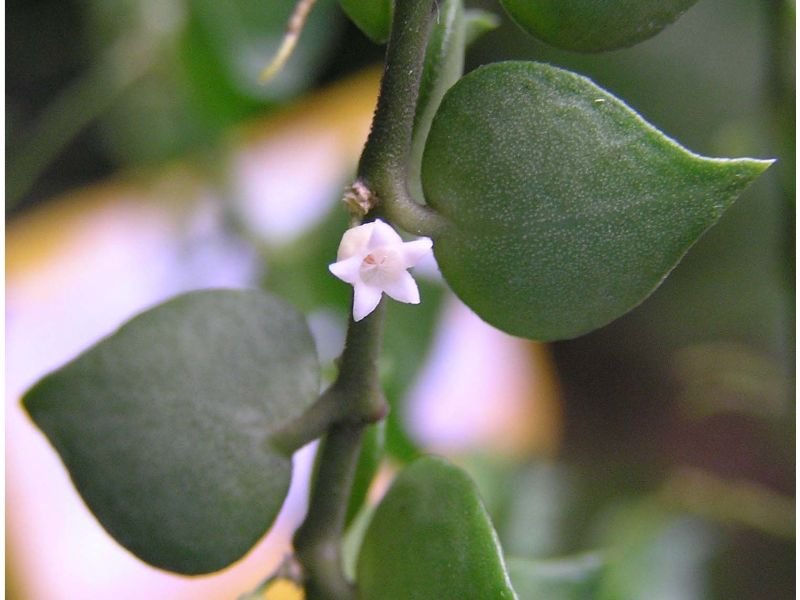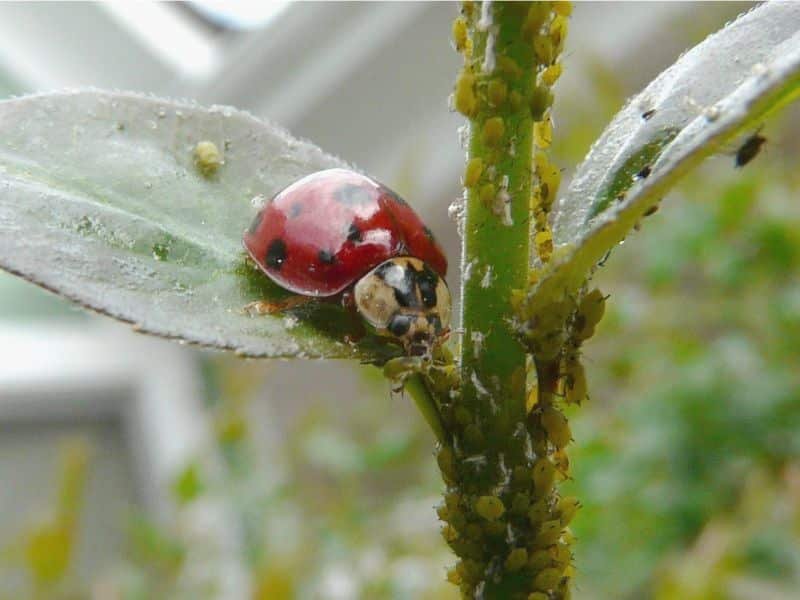Mealybugs are a common pest in home gardens, often found on plants, especially succulents like Dischidia ruscifolia. These sap-sucking insects create sticky honeydew deposits and can weaken and disfigure the plant if allowed to remain.
With their fuzzy white bodies and waxy coating, mealybugs are the bane of many houseplant owners. They spread quickly, feasting on a variety of plants, including Dischidia ruscifolia. Mealybugs present a serious threat to this trailing epiphyte with variegated leaves and diminutive white or yellow flowers. Let’s delve into why these pests have an affinity for Dischidia ruscifolia and how you can get rid of them.

Table of Contents
Why Mealybugs invade your Dischidia Ruscifolia
Mealybugs Are Attracted to Plants Rich in Sugar and Sap
Sugary sap is one of the main reasons why mealybugs target certain plants over others. They’ll feast on a variety of succulent stems, leaves, roots, and even bark — wherever they can find sweet goodness! When it comes to Dischidia ruscifolia specifically, they love the plant’s thick fleshy stems which contain an abundance of sugar-filled sap. This edible substance serves as nourishment that sustains their colony.

It’s Easy for them To Spread From Plant to Plant
In addition to its sweet juices, the crawling nature of mealybugs makes it easy for them to disperse from one plant to another. As they crawl around your home searching for food sources, it’s likely that some will stumble across nearby Dischidia ruscifolia specimens and settle right in for an all-you-can-eat buffet! Before long your entire collection could be affected by this reclusive pest if not taken care of immediately!
The Effects Of An Infestation Are Quite Devastating
When left unchecked mealybug infestations can become severe enough that the health of your prized Dischidia ruscifolia takes a hit due to its reduced ability to photosynthesize energy from sunlight — resulting in yellowing foliage caused by lack of nutrient supply or poor lighting conditions. The worst case scenario may see leaves becoming covered with sticky honeydew (a sugary secretion) excreted by large colonies as well as potential root damage leading to dieback caused by prolonged feeding habits underground!
How To Get Rid Of Mealy Bugs On Your Dischida Ruscifolias
Inspect for mealybugs regularly
Inspecting for mealybugs should be part of the regular care routine when caring for Dischidia ruscifolia plants. Inspect at least once every week or two, paying special attention to any new growth and the undersides of leaves as these areas are popular hiding spots for mealybugs. Look out for signs such as a white, wax-like residue on leaves and stems, clusters of small light brown bugs or ants that may indicate an ant/mealybug relationship, and small round ‘cottony’ blobs which are often larvae. If you spot any sign of pests, take action immediately to prevent further damage to your plant.
Treat with insecticidal soap
Insecticidal soap or horticultural oil sprays that contain pyrethrins or potassium salts of fatty acids are the most effective and least harmful way to get rid of mealybugs on Dischidia ruscifolia plants. Be sure to read the label carefully and follow all dilution instructions as using too much can do more harm than good by damaging foliage. It’s best to reapply treatments every few days until all signs of infestations have subsided before discontinuing treatment entirely. Once the mealybugs are gone, practice regular inspections to prevent future outbreaks.
Isolate susceptible plants
As always, prevention is better than cure: moving D. ruscifolia away from other infected plants will prevent the spread of pests like mealybugs from one location to another within your home garden space; if a nearby pot has been inhabited by pests such as mealybugs, make sure there’s sufficient distance between this area and where you’re planting D. ruscifolia next time around! This also applies indoors—it is best practice to isolate an incoming plant from existing houseplants until it has been checked for disease or insect infestations first!
Consider natural predators
Encouraging beneficial insects such as ladybugs, predatory mites, green lacewings, and beneficial wasps into your home garden environment can be an effective way to help keep invading pests at bay. Introducing these natural predators, help control mealybug populations without the use of harmful broad-spectrum pesticides or insecticides.

Ladybugs eat as many as 50 aphids per day while lacewings feed on small pests like mites; both will help reduce your mealybug problem in a safe and effective manner. Additionally, planting companion herbs and flowers such as dill, cilantro, cosmos, sunflowers, marigolds, and others will attract these helpful bugs to your garden space.
Overall, with some regular care and vigilance combined with proactive preventive measures, you can easily keep mealybug infestations at bay while keeping your lovely Dischidia ruscifolia plant healthy, happy, and beautiful all year round!

Gardening is my passion and growing plants indoors has always been a stress relief for me. Grow a banana tree in my apartment once (although failed to produce bananas).






